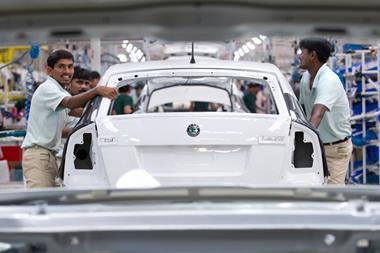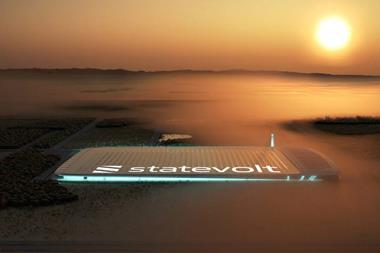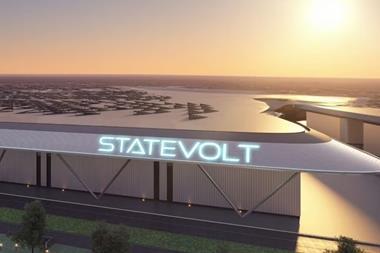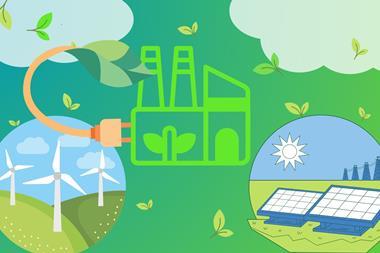
OEM truck manufacturers around the world are ramping up output in order to meet increasing demand, but this is balanced by the need to improve production and product efficiency while reducing plant emissions.
Manufacturing and logistics experts will often say that the volume of trucks on the road is a good barometer of how the local economy is performing. In order to get more trucks on the road more have to be sold, and recent figures suggest that heavy vehicle sales are coming out of the recession faster than those of passenger cars. Backing this up, several of the world’s truck makers have recently reported month-on-month rises in production (and sales) that would be the envy of automotive OEMs.
European confidence and global growth
According to an ACEA (European Automobile Manufacturers’ Association) report released in November last year, new commercial vehicle registrations in October were up 7.7% in the EU, amounting to almost 163,000 units. Similar results were reported in France (+7.8%) and Germany (+7.2%), the largest EU markets. Looking at the longer term, from January to October, Spain was the only major market to contract (-4.9%). Germany (+19.5%), the UK (+17.8%) and France (5.5%) all posted growth, leading to an overall 10.8% increase.
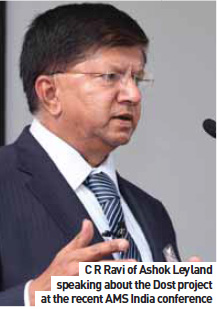 In 2010, the global truck manufacturing industry grew by approximately 20% (over 2009 figures), reaching a value of about $390 billion. It is predicted that by 2015 the industry will be worth more than $650 billion, a 65% increase over 2010. In volume terms, the market grew by almost 25% over the same year, topping 17 million units. By 2015, the industry is forecast to have a volume of 26 million units, an increase of 52% over 2010.
In 2010, the global truck manufacturing industry grew by approximately 20% (over 2009 figures), reaching a value of about $390 billion. It is predicted that by 2015 the industry will be worth more than $650 billion, a 65% increase over 2010. In volume terms, the market grew by almost 25% over the same year, topping 17 million units. By 2015, the industry is forecast to have a volume of 26 million units, an increase of 52% over 2010.
Ashok Leyland - A new approach
In a departure from its previous focus on 3.5 tonne-plus trucks, September last year saw Ashok Leyland (AL) launch an all-new light commercial, the Dost. Featuring a 1.25 tonne payload chassis, the range is split into three trim levels, priced from $7,800 to $8,400. Dost features an AL-developed threecylinder, 1.5 litre direct-injection turbodiesel engine, produced on a line adapted from a six-cylinder engine production installation. According to AL, production on the line was changed over in record time. The line incorporates several novel features, including a clean room for final assembly.
As C. R. Ravi, General Manager of Project Planning told delegates at the recent AMS India conference (see the full conference report on page 20 of this issue), this uses laminar air flow blowers to reduce dust particle levels in order to achieve cleanliness standards required for common rail fuel system assembly – a maximum of 1 million particles measuring less than 5μm in 1m3 of air. Using laminar flow, very low dust conditions can be maintained in an open section of a mixed production line without the need for a dedicated clean room.
In a first for the Indian LCV market, AL will offer readyto- use vehicles on the Dost platform, such as refrigerated containers, steel containers, ambulances, aluminium fixed side decks and service-at-site vehicles. Dost is built at Ashok Leyland’s manufacturing facility in Hosur, Tamil Nadu state, and is the first vehicle to be launched through its joint venture with Nissan.
Caterpillar – Asian expansion
Last November, Caterpillar (Cat) announced plans to build a mining truck facility in Batam, Indonesia, which will produce a range of chassis and bodies for the Asia-Pacific market.
Chairman and CEO Doug Oberhelman announced the growth plans for mining at the 2011 Asia-Pacific Economic 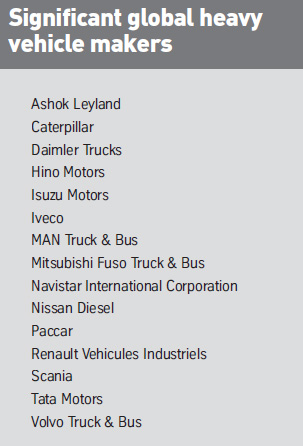 Cooperation (APEC) Summit “because much of the global demand for commodities today is being driven by the positive economic growth and development that is taking place in the growth markets of the Asia-Pacific region.” The company plans to invest about $150 million in the facility, which is expected to start production of truck bodies in 2012. The first trucks will be produced in the third quarter of 2013. The company has also approved plans to triple excavator production at its existing plant in Cileungsi, West Java, which opened in 1982 and primarily produces excavators and skidders.
Cooperation (APEC) Summit “because much of the global demand for commodities today is being driven by the positive economic growth and development that is taking place in the growth markets of the Asia-Pacific region.” The company plans to invest about $150 million in the facility, which is expected to start production of truck bodies in 2012. The first trucks will be produced in the third quarter of 2013. The company has also approved plans to triple excavator production at its existing plant in Cileungsi, West Java, which opened in 1982 and primarily produces excavators and skidders.
Since the start of 2010, Cat has announced a series of investments and capacity expansion plans for its operations across Asia, including a quadrupling of excavator production at its Xuzhou, China plant. Further to this, the company has a total of nine new facilities now under construction in China, in addition to two new manufacturing operations scheduled to start in Thailand.
At the APEC Summit, Cat executives outlined plans for new investments at the company’s existing manufacturing facilities in Decatur and East Peoria, Illinois. In total, nearly $300 million will be spent to increase capacity for large mining trucks produced in Decatur (of which 90% are exported). An additional capital investment of about $340 million is planned for production of large tracktype tractors in East Peoria, which are used in mining applications around the world. The company expects the additional truck capacity in Decatur to be installed by 2016; work to expand tractor production in East Peoria is expected to be completed by 2015.
Decatur to be installed by 2016; work to expand tractor production in East Peoria is expected to be completed by 2015.
Daimler - Demand creating jobs
As the largest global manufacturer of trucks above six tons GVW, Daimler Trucks makes vehicles under Mercedes-Benz, Freightliner, Western Star and Fuso brands. The division’s 28 production facilities are in the NAFTA region (14; 11 in the US and 3 in Mexico), Asia (5), Europe (7), South America (1) and Africa (1). In Brazil, the company will expand its production network in 2012 with the addition of a plant in Juiz de Fora, where heavy-duty Actros as well as mediumduty Accelo trucks will be produced for Latin American markets.
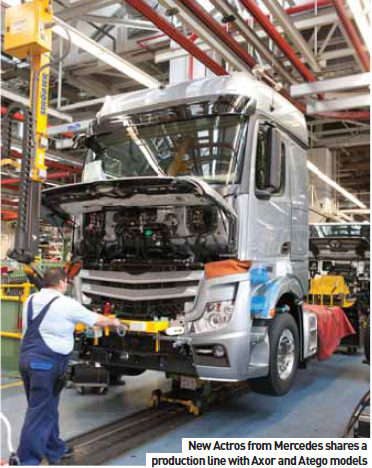 Daimler Trucks North America (DTNA) plans to ramp up production of Western Star heavy-duty trucks at its plant in Portland, Oregon, where it will add a second shift. This will create approximately 350 new jobs at the facility by the end of 2012. The new hiring will increase the number of production workers for Western Star trucks by almost 50%. Hiring of new employees started in November, and the new shift is slated to be at full capacity by February this year. The follows the July announcement by DTNA which outlined plans to increase the total workforce across truck production plants in the US and Mexico by around 2,700 employees. The increase in production capacity and hiring comes in response to a strong rise in sales. In August, for example, the unit achieved its best sales result since March 2007. Sales of DTNA vehicles in the US and Canada rose more than 50% through August 2011, compared to the same period in 2010. Daimler Trucks’ most important sales markets in 2010 were Asia with 34% of unit sales, the NAFTA region (22%), Latin America - excluding Mexico (16%) and Western Europe (16%).
Daimler Trucks North America (DTNA) plans to ramp up production of Western Star heavy-duty trucks at its plant in Portland, Oregon, where it will add a second shift. This will create approximately 350 new jobs at the facility by the end of 2012. The new hiring will increase the number of production workers for Western Star trucks by almost 50%. Hiring of new employees started in November, and the new shift is slated to be at full capacity by February this year. The follows the July announcement by DTNA which outlined plans to increase the total workforce across truck production plants in the US and Mexico by around 2,700 employees. The increase in production capacity and hiring comes in response to a strong rise in sales. In August, for example, the unit achieved its best sales result since March 2007. Sales of DTNA vehicles in the US and Canada rose more than 50% through August 2011, compared to the same period in 2010. Daimler Trucks’ most important sales markets in 2010 were Asia with 34% of unit sales, the NAFTA region (22%), Latin America - excluding Mexico (16%) and Western Europe (16%).
In September 2011, the Mercedes-Benz plant in Wörth, Germany, the company’s largest truck assembly facility, started series production of the new Actros model. What is unusual about production in Wörth is that all three of the Mercedes-Benz model series (Actros, Axor, and Atego) are made on the same assembly line. More than €2 billion was spent on developing the new truck and preparing the Wörth plant and its equipment for the production launch. The company has also built an automated warehouse for small parts, forming the basis for a new logistics concept.
Volvo - Shifting up a gear in Brazil
Volvo Trucks’ South American unit, Volvo do Brasil, started the production of its I-Shift gearbox at its plant in Curitiba, 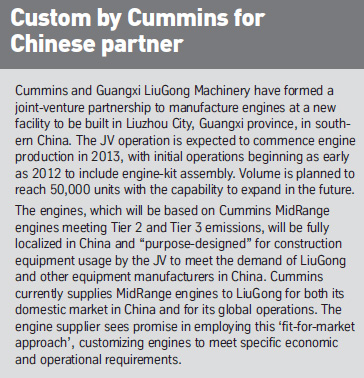 Parana state, at the beginning of December; the truckmaker will also start local production of 11-litre engines. The Brazilian gearboxes will equip the FH and FM heavy vehicle lines.
Parana state, at the beginning of December; the truckmaker will also start local production of 11-litre engines. The Brazilian gearboxes will equip the FH and FM heavy vehicle lines.
“The I-Shift gearbox has been getting outstanding acceptance in Brazil and in all the other countries of South America. It already equips about 80% of the FH and FM trucks and over 90% of the highway buses which leave our assembly line in Curitiba”, says Volvo do Brasil’s President, Roger Alm. With the 11-litre engine ‘nationalization’, the Curitiba Volvo factory will further increase its portfolio of locally-manufactured products. “Our engine line is flexible. Now we will produce 13 and 11-litre engines,” added Alm.
Green giants
Having cut the fuel consumption of its vehicles over the past few decades, Volvo Trucks is now improving the environmental footprint of its facilities. With reduced energy and paint use and lower solvent emissions, its northern Swedish paintshop is the most environmentally sustainable of its kind in the world - and it can still offer customers a range of more than 850 colours.
About 20 litres of paint is used for each truck cab, which is then baked to harden the finish. Multiply this process by tens of thousands of vehicles each year, while also including the heating and cooling needed for other parts of the paintshop and it is clear that such a facility could potentially have a huge impact on the environment in terms of materials and energy. But using heat from waste, natural cooling and cutting paint consumption by almost 50%, Volvo Trucks’ paintshop in Umeå has become an example of how innovative thinking can shrink the environmental footprint of a major industrial facility.
 Staff at the paintshop have focused on reducing solvent emissions and improving energy efficiency, with some impressive results. Between 1999 and 2008, energy consumption was reduced by 30%. This success is even more remarkable in view of the fact that the amount of painting being undertaken has increased significantly during the same period, partly because plastic components that were previously painted in Belgium (where Volvo Truck created the world’s first CO2-neutral manufacturing facility) are now painted in the Umeå paintshop.
Staff at the paintshop have focused on reducing solvent emissions and improving energy efficiency, with some impressive results. Between 1999 and 2008, energy consumption was reduced by 30%. This success is even more remarkable in view of the fact that the amount of painting being undertaken has increased significantly during the same period, partly because plastic components that were previously painted in Belgium (where Volvo Truck created the world’s first CO2-neutral manufacturing facility) are now painted in the Umeå paintshop.
“When components are not painted in the same place, it’s incredibly difficult to make sure they are the same shade as the rest of the cab. That’s why we chose to bring them here,” explains Hans Venngren, Volvo Trucks’ Global Process Manager for Surface Treatment.
Energy savings have been achieved by re-using treated air in the spray booths and at the plant. The air in the plant is used as incoming air in the painting process, while around 75% of the air in the spray booths is re-used. As a result, the need for newly-conditioned air from outside the plant has been dramatically reduced.
Fuel from waste
Improved operational planning, such as turning off machines when there are gaps on the production line, has also helped to reduce energy consumption. Other energysaving measures include the installation of energy-efficient electric motors.
to reduce energy consumption. Other energysaving measures include the installation of energy-efficient electric motors.
“When we started jointly painting the plastic with the cab, the temperature in the paint-hardening ovens was cut by more than 50oC and this naturally reduced the need for energy,” says Venngren. “Since we required lower temperatures, we were also able to switch from liquefied petroleum gas (LPG) to district heating to heat the ovens.” District heating, fuelled in part by converting domestic waste into energy at a nearby power plant, has also replaced oil in the heating process. The remaining LPG in the afterburning system is now being replaced by environmentally-friendly dimethyl ether (DME) produced from biomass.
One of the most spectacular energy savings, however, comes from the plant’s cooling system. The Umeälven river flows just outside the plant and under it there is an underground river that is always cold, regardless of the season. This cold water is pumped to the plant via a two kilometre system of pipes. “We then use the water in various cooling systems,” says Venngren. “This has enabled us to replace many of the cooling machines that used refrigerants such as CFCs.”
The paintshop has been modernised and production has been streamlined in several different phases and, as a result, the use of paint and solvents has been significantly reduced, together with airborne emissions. In 1988, these emissions were approximately 70g/m2 of painted cab surface. “The corresponding figure today is less than 10 grams, which is a fair bit below the EU limit of 55g/m2. Even if we still have some way to go, we are still really satisfied with the work we have done,” says Venngren.
Smith Electric - Building in the Bronx
In November 2011, Smith Electric Vehicles, a leader in all-electric commercial vehicles, announced that it would assemble electric trucks in the South Bronx borough of New York City, adding 100 jobs to the region. A $6 million package of state and city incentives helped secure the deal. Smith, based in Kansas City, Missouri, manufactures battery-powered box trucks for urban deliveries. “Sitting in Kansas City and trying to figure out how to locate a factory in New York City was a little daunting,” says Bryan Hansel, the company’s chairman and chief executive. Having leased a 90,000 sq. ft. warehouse, the company will start production of its Smith Newton electric trucks there in the second quarter of 2012. Hansel adds that the factory will assemble up to 100 trucks a month in a single one-shift line, but the company could add shifts and lines as demand dictates. According a company spokesperson, the basic cab and chassis, made by Avia and imported from the Czech Republic, costs $75,000, but battery packs ranging from 40 to 120 kilowatt hours add another $25,000 to $75,000. The batteries are sourced from A123 Systems and Valence Technology.
Working with the bus fabricator Trans Tech, Smith will also produce electric school buses. These will be assembled on the same electric Newton truck chassis. Dan Daniels, President of Trans Tech, based in Warwick, New York, said that the company was looking for a suitable location to build the buses, including sites in New York. The new facility – Smith’s second US manufacturing, sales and service centre – will not affect production or job levels at Smith’s headquarters in Kansas City.
































